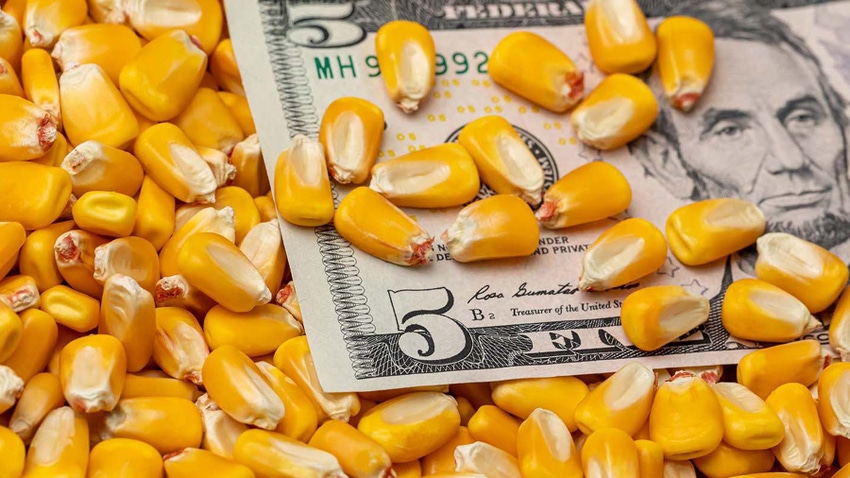
Coming into the March Planting Intentions and Quarterly Stocks Report, the corn and bean markets had been on the struggle bus. After a nice rally in the month of March, most signs were pointing to a poor end to the month. However, the report dropped on Thursday, ahead of the three-day weekend, and we found support from a place we weren’t necessarily expecting.
Let’s start with the big topic of acreage. This report generally carries a ton of volatility with it due to highly anticipated acreage numbers. While the average trade guess for corn was 90 to 93.47 million acres, the feel of the market was certainly one in which acres were presumed to be bearish. The average trade guess was 91.776, so when the USDA released 90.036, it was a friendly number to say the least. Corn took off like we haven’t seen in some time, with double-digit gains on the day.
Soybean acreage, however, was a nothing burger. Given 85.35 to 88 million acres expectations, the 86.51 number essentially came in right at the average trade guess of 86.53. With soybean acres much higher than 2023, the trade appeared to take a bearish bias with prices lower, while corn and wheat traded with double-digit gains. Those gains appeared to pull beans up, with mixed closes on the day and minimal losses.
The other part of the report that many tend to ignore is the quarterly stocks portion. While corn and bean stocks are certainly on the rise, what these reports generally care about is how we compare to what the trade is anticipating.
For corn, stocks as of March 1, 2023, were 7.396 bbu, so this year’s number of 8.347 looks robust to say the least. Given current projections of ending stocks to rise 812 mbu, it’s not hard to fathom we have more corn on hand halfway through the marketing year.
What was friendly about the report was corn stocks came in 80 mbu lower than the average trade guess, implying corn usage is stronger than what the trade was guessing.
For soybean stocks, we were higher than a year ago as well. Last March 1, we had soybean stocks of 1.687 bbu, so this year’s 1.845 bbu was again in excess of a year ago levels.
What made the bean report a touch bearish with regards to stocks was the fact bean stocks were 17 mbu higher than the trade was guessing. That may not seem like a ton of beans, but it certainly isn’t bullish to have more beans than expected.
What did we learn from this report?
Corn acreage is a supportive number where the market sorely needed support. While there’s always the chance we plant more corn than predicted, the markets should see support as traders plug 90 million acres into their balance sheets instead of a number like 91.8 or 92.5. I look for corn to make a run toward $5, but I certainly wouldn’t ignore it. I see this acreage number giving us some excellent opportunities to catch up on risk management.
With corn stocks lower than the trade guessed, we could see revisions in the upcoming WASDE reports. My group has felt for some time that corn usage for ethanol is too low. So, seeing implied usage stronger than the trade was guessing is a good sign. This stocks number was supportive once again, and I view it similar to planted acreage: a chance to catch up on sales at better levels than we enjoyed just a day ago.
Given the USDA’s ending stocks number of 315 mbu, the last thing we needed was big soybean acres. However, as expected, we received a big acreage number. We also found implied usage on soybeans isn’t as good as the trade had thought. This report wasn’t bullish beans by any means, but beans held together on Thursday’s trade. My opinion is they did so due to corn and wheat prices lending support. On beans, I’d sure have a plan in place to manage risk as the likelihood of world and U.S. stocks increasing this marketing year are quite strong.
I know spring planting is upon us or right around the corner. Please be safe out there and let us know if we can help you with any of your marketing needs.
Reach the AgMarket.Net staff at 844-4AG-MRKT or visit AgMarket.Net. AgMarket.Net has tools to help producers refine their numbers and make decisions based on their operation.
The risk of loss in trading futures and/or options is substantial and each investor and/or trader must consider whether this is a suitable investment. AgMarket.Net is the Farm Division of John Stewart and Associates (JSA) based out of St Joe, MO and all futures and options trades are cleared through ADMIS in Chicago IL. This material has been prepared by an agent of JSA or a third party and is, or is in the nature of, a solicitation. By accepting this communication, you agree that you are an experienced user of the futures markets, capable of making independent trading decisions, and agree that you are not, and will not, rely solely on this communication in making trading decisions. Past performance, whether actual or indicated by simulated historical tests of strategies, is not indicative of future results. Trading information and advice is based on information taken from 3rd party sources that are believed to be reliable. We do not guarantee that such information is accurate or complete and it should not be relied upon as such. Trading advice reflects our good faith judgment at a specific time and is subject to change without notice. There is no guarantee that the advice we give will result in profitable trades. The services provided by JSA may not be available in all jurisdictions. It is possible that the country in which you are a resident prohibits us from opening and maintaining an account for you.
About the Author(s)
You May Also Like






